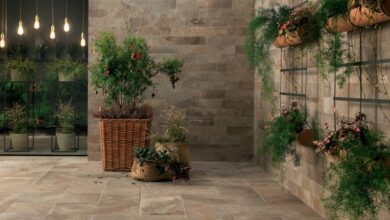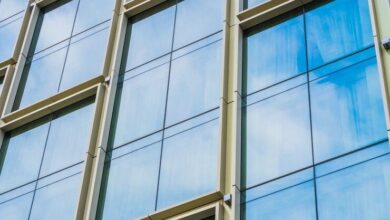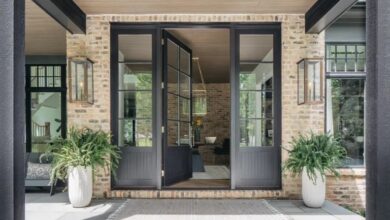The Complete Checklist For Winterizing Your Rental Home

I. Introduction
As the cold season approaches, ensuring your rental home is properly winterized is essential for maintaining its condition and keeping tenants comfortable. Winterizing a property not only prevents costly repairs but also enhances energy efficiency, making the home more attractive to current and potential tenants. The process of winterizing your rental home heating systems involves ensuring it’s well-prepared for the harsh winter months. For a detailed guide on heating requirements in rental properties, check out this resource on https://homeheatinghq.com/.
II. Inspect And Seal Windows And Doors
A. Check For Drafts
Drafts can significantly impact the indoor temperature and energy costs. Walk through each room and inspect windows and doors for any drafts. A simple way to identify drafts is by holding a lit candle near the edges of windows and doors.
B. Seal Gaps And Cracks
Use weatherstripping or caulk to seal any gaps and cracks around windows and doors. This not only keeps the warm air in but also prevents cold air from seeping inside. Weatherstripping is particularly effective for door frames, while caulk is suitable for sealing window frames and other fixed areas.
C. Install Storm Windows And Doors
If your rental property is in an area with extreme winter weather, consider installing storm windows and doors. These provide an additional layer of insulation, further reducing heat loss and protecting against severe weather conditions.
III. Inspect And Service The Heating System
A. Schedule A Professional Inspection
Before the onset of winter, have a professional HVAC technician inspect and service the heating system. Regular maintenance ensures the system is operating efficiently and can help prevent breakdowns during the coldest months.
B. Replace Filters
Dirty or clogged filters can restrict airflow and reduce the efficiency of the heating system. Replace filters regularly to maintain optimal performance. Monthly checks are recommended during high usage periods.
C. Bleed Radiators
If your rental home has a radiator heating system, bleeding the radiators can help eliminate trapped air that reduces heating efficiency. This simple maintenance task can improve heat distribution throughout the property.

IV. Insulate Pipes
A. Identify Vulnerable Pipes
Pipes in unheated areas such as basements, attics, and garages are particularly vulnerable to freezing. Identify these pipes and ensure they are adequately insulated.
B. Use Pipe Insulation
Wrap pipes with foam insulation to protect them from freezing temperatures. Pipe insulation is inexpensive and can prevent the costly repairs associated with burst pipes.
C. Drip Faucets
In extremely cold weather, letting faucets drip slightly can prevent pipes from freezing. This keeps water moving through the system, reducing the likelihood of ice forming.
V. Check The Roof And Gutters
A. Inspect The Roof
Examine the roof for any missing, damaged, or loose shingles that could allow water to penetrate and cause leaks. Repair any issues promptly to maintain the integrity of the roof.
B. Clean The Gutters
Clogged gutters can lead to ice dams, which can cause significant damage to the roof and walls. Ensure gutters and downspouts are clear of leaves, debris, and other obstructions. Install gutter guards to help keep them clean.
C. Check For Insulation
Proper roof insulation is crucial for preventing heat loss and reducing energy costs. Ensure the attic is adequately insulated to keep warm air from escaping through the roof.
VI. Prepare The Plumbing System
A. Drain Outdoor Faucets And Sprinklers
Disconnect and drain garden hoses, and shut off water supply to outdoor faucets. This prevents water from freezing in the pipes and causing them to burst.
B. Winterize The Irrigation System
If your rental property has an irrigation system, it should be winterized to prevent damage. This typically involves draining the system and blowing out any remaining water using compressed air.
C. Insulate Exposed Pipes
As previously mentioned, insulating exposed pipes in unheated areas is crucial. Additionally, consider installing heat tape or heat cables on pipes that are particularly prone to freezing.
VII. Maintain The Exterior
A. Check For Cracks And Gaps
Inspect the exterior of the rental property for cracks and gaps, especially around the foundation, walls, and eaves. Seal any openings to prevent cold air from entering and pests from seeking shelter inside.
B. Protect Outdoor Furniture And Equipment
Store outdoor furniture, grills, and other equipment in a sheltered area or cover them with weather-resistant tarps. This prevents damage from snow, ice, and cold temperatures.
C. Trim Trees And Shrubs
Trim any overhanging branches or shrubs near the property. Heavy snow and ice can cause branches to break and damage the roof, windows, or siding.
VIII. Prepare For Emergencies
A. Stock Emergency Supplies
Ensure the rental home is equipped with essential emergency supplies, such as flashlights, batteries, blankets, and a first-aid kit. Inform tenants of the location of these supplies and provide a list of emergency contacts.
B. Install Carbon Monoxide And Smoke Detectors
Check that carbon monoxide and smoke detectors are functioning correctly and have fresh batteries. These devices are crucial for tenant safety, especially during the winter when heating systems are in use.
C. Create An Emergency Plan
Develop an emergency plan for tenants that includes evacuation routes and procedures for dealing with common winter emergencies, such as power outages or severe weather. Communicate this plan clearly and ensure all tenants understand it.
IX. Enhance Indoor Comfort
A. Add Insulation
If your rental property has inadequate insulation, consider adding more. Insulating walls, attics, and crawl spaces can significantly improve indoor comfort and energy efficiency.
B. Use Thermal Curtains
Install thermal curtains on windows to help retain heat. These curtains are designed to reduce heat loss and can also block drafts, enhancing overall comfort.
C. Provide Space Heaters
For particularly cold rooms or areas that are difficult to heat, consider providing tenants with energy-efficient space heaters. Ensure they are used safely and in accordance with the manufacturer’s instructions.
X. Monitor And Maintain Indoor Air Quality
A. Ventilate Properly
Proper ventilation is essential for maintaining indoor air quality during the winter months. Ensure that exhaust fans in kitchens and bathrooms are functioning correctly to prevent moisture buildup and reduce the risk of mold growth.
B. Use A Humidifier
Winter air can be very dry, leading to discomfort and potential health issues. Consider providing a humidifier to maintain optimal humidity levels inside the rental property.
C. Change Air Filters
Regularly changing air filters in the HVAC system helps maintain good indoor air quality and ensures the system operates efficiently. Schedule filter replacements according to the manufacturer’s recommendations.
XI. Communicate With Tenants
A. Provide Winterization Tips
Share winterization tips with your tenants to help them understand the steps being taken to prepare the rental home for winter. This can include simple tasks they can perform, such as keeping windows closed and using draft stoppers.
B. Set Expectations
Clearly communicate any maintenance or inspections that will be conducted as part of the winterization process. Inform tenants of the schedule and any temporary inconveniences they may experience.
Encourage Reporting Of Issues
Encourage tenants to report any maintenance issues promptly, such as drafts, leaks, or heating problems. Addressing these issues quickly can prevent minor problems from becoming major repairs.

XII. Conclusion
Winterizing your rental home is a crucial task that requires careful planning and execution. By following this comprehensive checklist, you can protect your property from winter-related damage, enhance heating systems energy efficiency, and ensure a comfortable living environment for your tenants. Proactive winterization not only preserves the condition of the rental property but also demonstrates your commitment to tenant satisfaction, potentially increasing tenant retention and attracting new renters. For more tips on winterizing your rental property, visit us.
Frequently Asked Questions (FAQ)
1. Why is it important to winterize a rental home?
Winterizing a rental home prevents damage from cold weather, reduces heating costs, and ensures the safety and comfort of tenants. It helps avoid expensive repairs and maintain the property’s value.
2. What are the first steps in winterizing the exterior of my rental home?
Start by inspecting and repairing the roof and gutters, sealing windows and doors, protecting outdoor plumbing, and preparing the yard and outdoor equipment. These steps prevent water damage and keep cold air out.
3. How can I ensure my heating system is ready for winter?
Schedule a professional HVAC inspection, replace furnace filters, and clean and inspect vents and ducts. Regular maintenance ensures efficient heating and prevents breakdowns during the cold months.
4. What should I do to protect pipes from freezing?
Insulate pipes in unheated areas with pipe insulation or heat tape, and ensure adequate insulation in the attic and crawl spaces. This prevents pipes from freezing and bursting, which can cause significant water damage.
5. How can I improve the energy efficiency of windows and doors?
Apply weather stripping and caulk to seal gaps around windows and doors, install storm windows or door sweeps, and use heavy curtains to retain heat. These measures help reduce drafts and lower heating bills.



